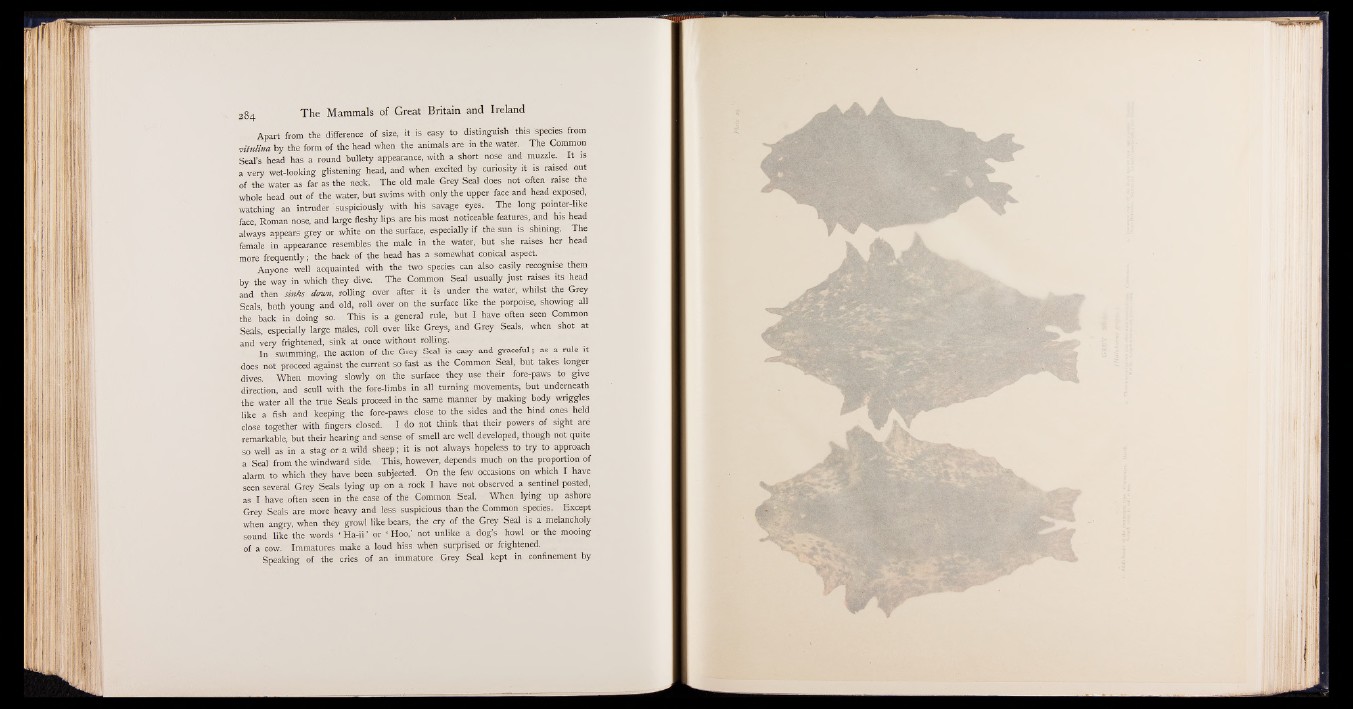
284 The Mammals of Great Britain and Ireland
Apart from the difference of size, it is easy to distinguish this species from
vitulina by the form of the head when the animals are in the water. The Common
Seal’s head has a round bullety appearance, with a short nose and muzzle., It H
a very wet-looking glistening head, and when excited by curiosity it is raised out
of the water as far as the neck. The old male Grey Seal does not often raise the
whole head out of the water, but swims with only the upper face and head exposed,
watching an intruder suspiciously with his savage eyes. The long pointer-like
face, Roman nose, and large fleshy lips are his most' noticeable features, and his head
always appears grey or white on thé surface, especially if the sun is shining. The
female in appearance resembles the male in the water, but she -raises her head
more frequently; the back of the head has a somewhat conical aspect.
Anyone well acquainted with the two species can also easily recognise them
by the way in which they dive. The Common Seal usually just raises its head
and then sinks down, rolling over after it js under the water, whilst the Grey
Seals, both young and old, roll over on the surface like the porpoise, showing all
the back in doing so: This is a general rule, but I have often seen Common
Seals, especially large males, roll over like Greys, and Grey Seals, when shot at
and very frightened, sink at once without rolling.
In swimming,, the action of the Grey Seal is easy and graceful; as a rule it
does not proceed against the current so fast as the Common Seal, but takes longer
dives. When moving slowly on the surface they use their fore-paws to give
direction, and scull with the fore-limbs in all turning movements, but underneath
the water all the true Seals proceed in the same manner by making body wriggles
like a fish and keeping the fore-paws close to the sides and the hind ones held
I close together with fingers closed. I do not think that their powers of sight are
remarkable, but their hearing and sense of smell are well developed, though not quite
so well as in a stag or a wild sheep; it is not always hopeless to try to approach
a Seal from the windward side. This, however, depends much bn the proportion of
alarm to which they have been subjected. On the few occasions on which I have
seen several Grey Seals lying up on a rock I have not observed a sentinel posted,
as I have ,often seen in the case of the Common Seal. When lying up ashore
Grey Seals are more heavy and less suspicious than the Common species. Except
when angry, when they growl like bears, the cry of the Grey Seal is a melancholy
soundHke the words ‘ Hadi’ or Hoo,’ not unlike a dog’s howl or the mooing
of a cow. Immatures make a loud hiss when surprised or frightened.
Speaking of the cries of an immature Grey Seal kept in confinement by